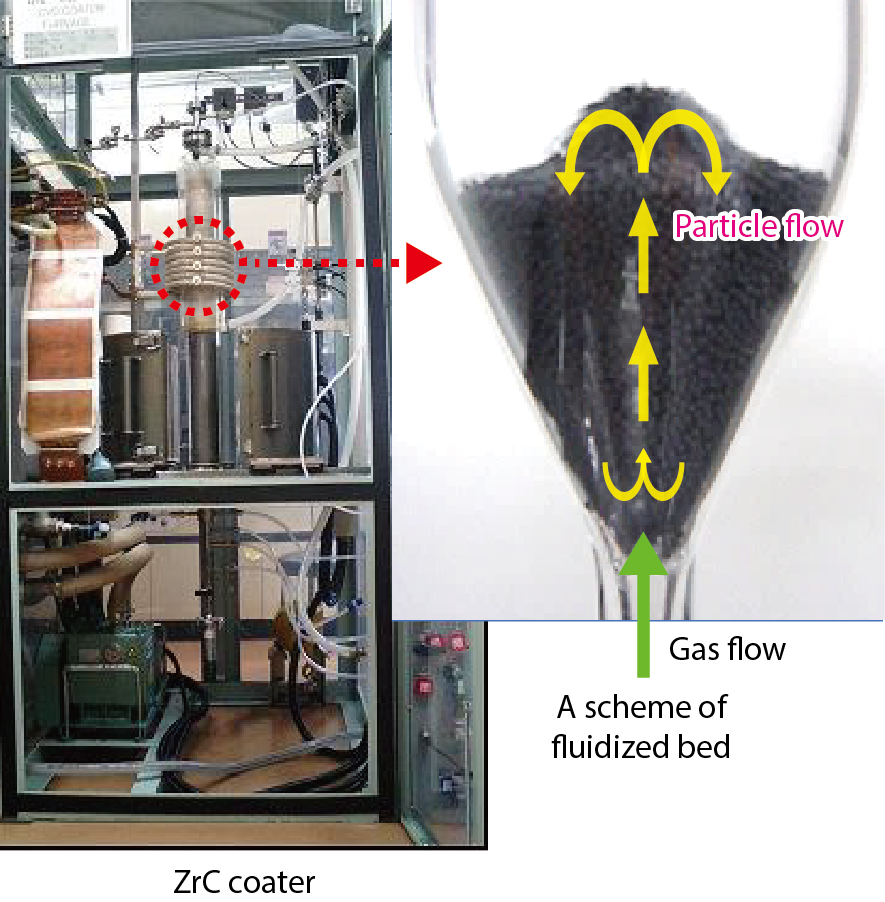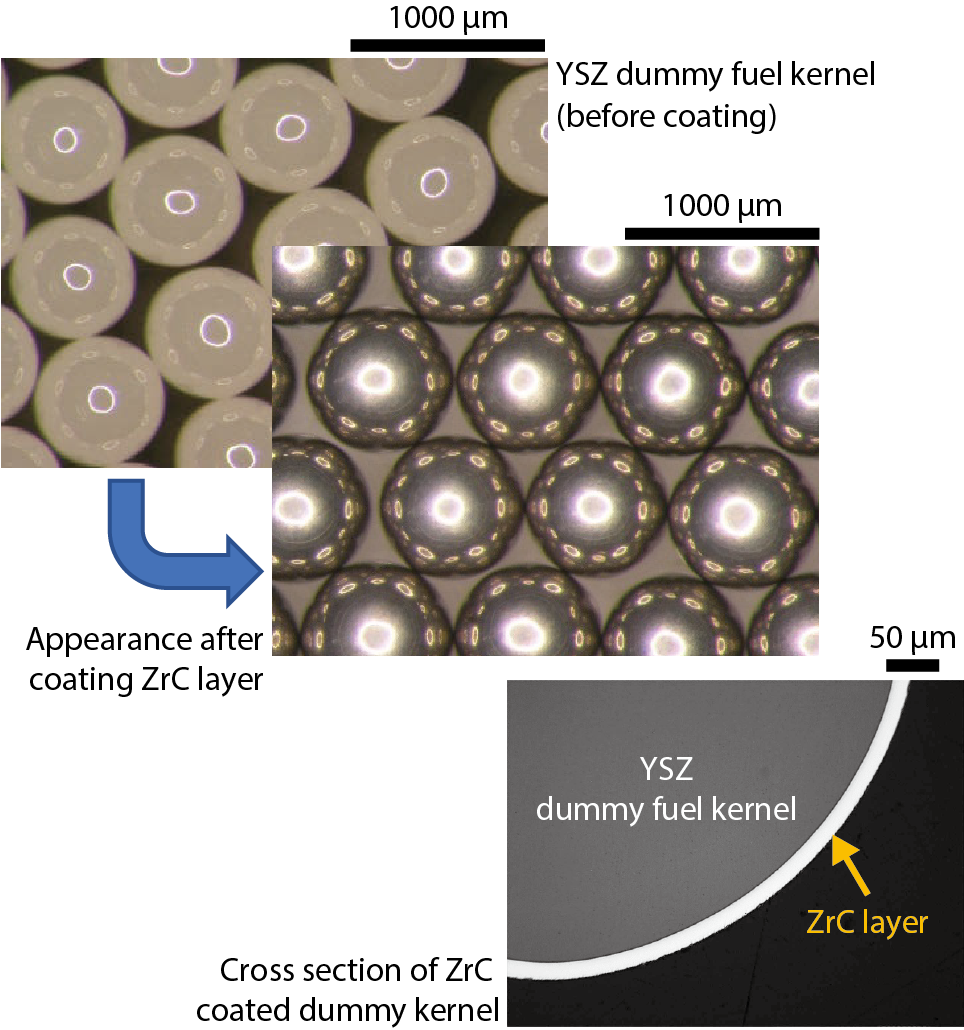
Fig.6-5 ZrC coater constructed by JAEA

Fig.6-6 Appearance and cross section of ZrC layer obtained by coating test
Plutonium (Pu) extracted by reprocessing from the spent fuel of the light water reactor (LWR) is planned for reuse as MOX fuel in both the LWR and the fast breeder reactor. With its inherent safety features, the High Temperature Gas-cooled Reactor (HTGR) is expected to reduce Pu safely, reduce the risk factors of core melting accidents. On the other hand, the burnup of reprocessed Pu fuel comprising more than 60 % fissile material is 600 GWd/t, one order of magnitude higher than that of conventional uranium fuel. From a nuclear security and safety perspective, resistance to nuclear proliferation and maintenance of integrity under very high burnup conditions is important when applying Pu as an HTGR fuel.
The HTGR uses characteristic coated fuel particles (CFPs) with diameters below 1 mm. Each particle consists of a fuel kernel with an approximate diameter of 0.5 mm covered by quadruplet ceramic layers made from carbon (C) and silicon carbide (each 25–45 µm thick). The Pu is very difficult to reprocess, as it is dispersed in an inert matrix of yttria-stabilized zirconia (YSZ) which greatly increases the nuclear security over conventional oxide fuels. However, the free oxygen generated by fission increases the internal gas pressure, causing additional CFP failure that inhibits the extended burnup of the CFP. Therefore, the CFP should be maintained intact under very high burnup conditions.
To enhance the safety of Pu burner HTGR fuel (3S-TRISO fuel) under extended burnup, we developed a technology that directly coats zirconium carbide (ZrC) on the fuel kernel. The refractory ZrC sequesters free oxygen, preventing the increase of partial pressure of oxygen in the CFP, and controlling the compositions of carbon and zirconium. Most importantly for obtaining stoichiometric ZrC, the C/Zr ratio is controlled at 1.0. Thus, we have been investigating the chemical vapor deposition conditions of ZrC by the bromide method. The ZrC coater developed by JAEA was evaluated in several coating tests, as shown in Fig.6-5.
To optimize the conditions of the stoichiometric ZrC coating, we first needed to improve the conventional condition, which is optimized to reduce excess free-carbon in ZrC coated on C coating. Here, we studied the temperature distributions in the reactor using particles coated with different ZrC compositions. The coating tests were conducted under carefully controlled conditions in a fluidized bed. The desired output (600 GWd/t) was achieved by YSZ dummy fuel kernels twice coated with a stoichiometric ZrC layer (approximate thickness: 21 µm; target value: 10 µm), as shown in Fig.6-6.
Hereafter we will fabricate a new dummy fuel kernel containing cerium (which has similar chemical properties to Pu), and evaluate it in ZrC coating tests. Based on the results, we will develop the fundamental technologies for 3S-TRISO fuel fabrication.
The present study was sponsored by the Ministry of Education, Culture, Sports, Science and Technology (MEXT), Japan.